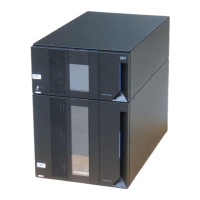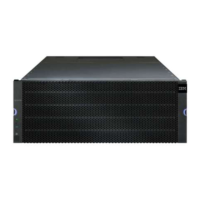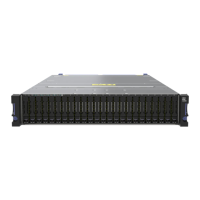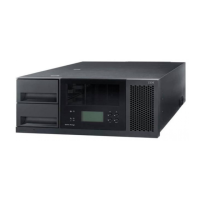478 IBM Midrange System Storage Hardware Guide
-i Shows the IP address of the known storage subsystems. Use this terminal with the -d terminal. The
file’s contents use the format storage-system-name IP-address1 IPaddress2.
-m Specifies the IP address or host name of the mail/SNMP server that will send the alerts.
-n Specifies the storage subsystem name on which you want to perform the script commands.
This name is optional when a <hostname> or <IP address> is used. However, if you are managing
the storage subsystem using the host-agent management method, you must use the -n option if
more than one storage subsystem is connected to the host at the specified address.
This name is required when the <hostname> or <IP address> is not used. However, the storage
subsystem name must be configured for use in the Enterprise Management window and must not
be a duplicate of any other configured storage subsystem name.
-o Specifies a file name for all output text from the script engine. If this parameter is not used, the output
goes to stdout.
-p Specifies the password for the storage subsystem on which you want to run commands. A password
is not necessary under these conditions:
A password has not been set on the storage subsystem.
The password is specified in a script file that you are running.
You specify the password by using the -c terminal and the set session password= password
command.
-q Specifies the frequency at which you want to include additional profile or support bundle information
in the e-mail alert notifications. An e-mail alert notification containing at least the basic event
information is always generated for every critical event. If you set the -I terminal to eventOnly, the
only valid value for the -q terminal is everyEvent. If you set the -I terminal to either the profile value
or the supportBundle value, this information is included with the e-mails with the frequency specified
by the -q terminal. These values are valid frequency values:
everyEvent: Information is returned with every e-mail alert notification.
2: Information is returned no more than once every two hours.
4: Information is returned no more than once every four hours.
8: Information is returned no more than once every eight hours.
12: Information is returned no more than once every 12 hours.
24: Information is returned no more than once every 24 hours.
-quick Reduces the amount of time that is required to run a single-line operation. An example of a
single-line operation is the recreate flashcopy logicalDrive command. This terminal reduces
time by not running background processes for the duration of the command.
Do not use this terminal for operations that involve more than one single-line operation. Extensive
use of this command can overrun the controller with more commands than the controller can
process, which causes operational failure. Also, status updates and configuration updates that are
usually collected from background processes will not be available to the CLI. This terminal causes
operations that depend on background information to fail.
-s Displays the alert settings for the storage subsystems currently configured in the Enterprise
Management window.
-S Use this parameter to suppress informational messages describing command progress that appear
when running script commands. (Suppressing informational messages is also called “silent mode.”)
This parameter suppresses the following messages:
Performance syntax check.
Syntax check complete.
Executing script.
Script execution complete.
SMcli completed successfully.
-v Use this parameter with the -d parameter to display the current global status of the known devices
in a configuration file.
Command-line
parameter
Description
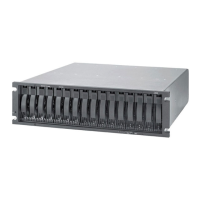
